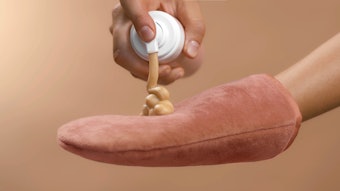
Sun spots, or solar lentigines, are a pigment change that shows dark spots in the skin as a response to exposure to ultraviolet (UV) radiation, per a case study. Sun spots can be found on the hands, face, back, arms, feet and shoulders.
When treating sun spots, there are a handful of options. The study explains that lasers are one of the most effective forms of treatment for sun spots. They can be treated with different types of lasers that emit specific wavelengths that are absorbed by melanin.
Related: Benefit Cosmetics Zaps Into the Laser Game
A fast and accessible method includes nanosecond and picosecond‐switched lasers, which often only requires just one or two treatments.
Biophotonic treatment, comprising a multi‐light‐emitting diode (LED) lamp and specialized chromophore containing gel that together emit fluorescent light energy, has been clinically proven to enhance the overall appearance of the skin with lasting results.
Two picosecond laser treatments were used for facial treatment of sun spots. The study had patients receive nine minutes of biophotonic treatment, once a week for four weeks. The overall reduction in spots was effective and maintained for three months with almost no pigmentation changes visible after all treatments. Spot removal was due to the picosecond laser treatment.
Very Well Health suggests other treatment options such as microdermabrasion to physically erode the surface skin cells, cryosurgery to freeze sunspots causing the darkened skin to peel away and even chemical peels with salicylic acid and glycolic acid that remove the top layer of the skin.
Making sure you are protecting your skin from UV rays is the best way to prevent future spots and prevent current spots from darkening.










